VIUMBE wa ajabu wanadaiwa kuonekana katika Ziwa
Natron. Ziwa hili ambalo wataalamu wanasema lina kiwango kikubwa cha
‘Alkaline’ ambayo imekuwa ikiwaathiri viumbe wanaokuwa karibu na maji
hayo kwa kuchoma ngozi na macho inabadili muonekano wa viumbe hivyo.
Hizi picha zimepigwa kwenye ziwa Natron, ziwa ambalo ninajulikana kwa
kuwa na “alkaline” ya juu iliyopo kwenye vipimo vya PH9-PH 10.5,
inachoma ngozi na macho ya wanyama ambao wanakuwa karibu na maji.
Angalia picha mwenyewe ujionee viumbe hawa.
Approaching the shoreline of Lake Natron in Tanzania, photographer Nick Brandt
faced an eerie sight: There, lying on the earth as still and stiff as
statues, were calcified corpses of a variety of birds and bats that had
met their untimely demise after crashing into the deadly waters.
“No one knows
for certain exactly how [these animals] die, but it appears that the
extreme reflective nature of the lake’s surface confuses them, causing
them to crash into the lake,” Brandt writes in his new photo book Across the Ravaged Land.
“The water has an extremely high soda and salt content, so high that it
would strip the ink off my Kodak film boxes within a few seconds. The
soda and salt causes the creatures to calcify, perfectly preserved, as
they dry.”
(Story continues below.)
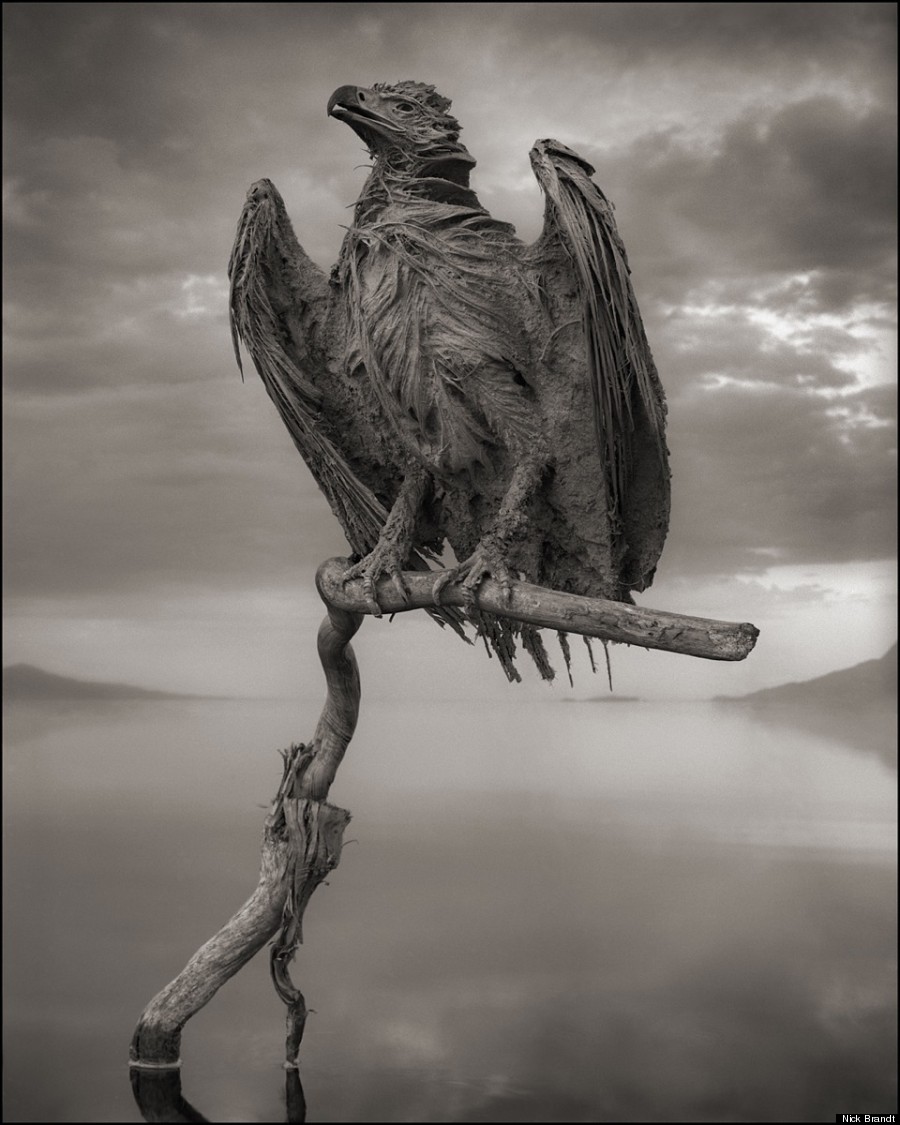

Calcified fish eagle.
Other than
serving as a breeding area for the endangered Lesser Flamingo and as a
home to certain kinds of algae and bacteria, Lake Natron is inhospitable
to life.
Blood-red from the bacteria that live in it, the salt lake is steaming hot, with temperatures that can reach up to 140 degrees Fahrenheit, according to the New Scientist.
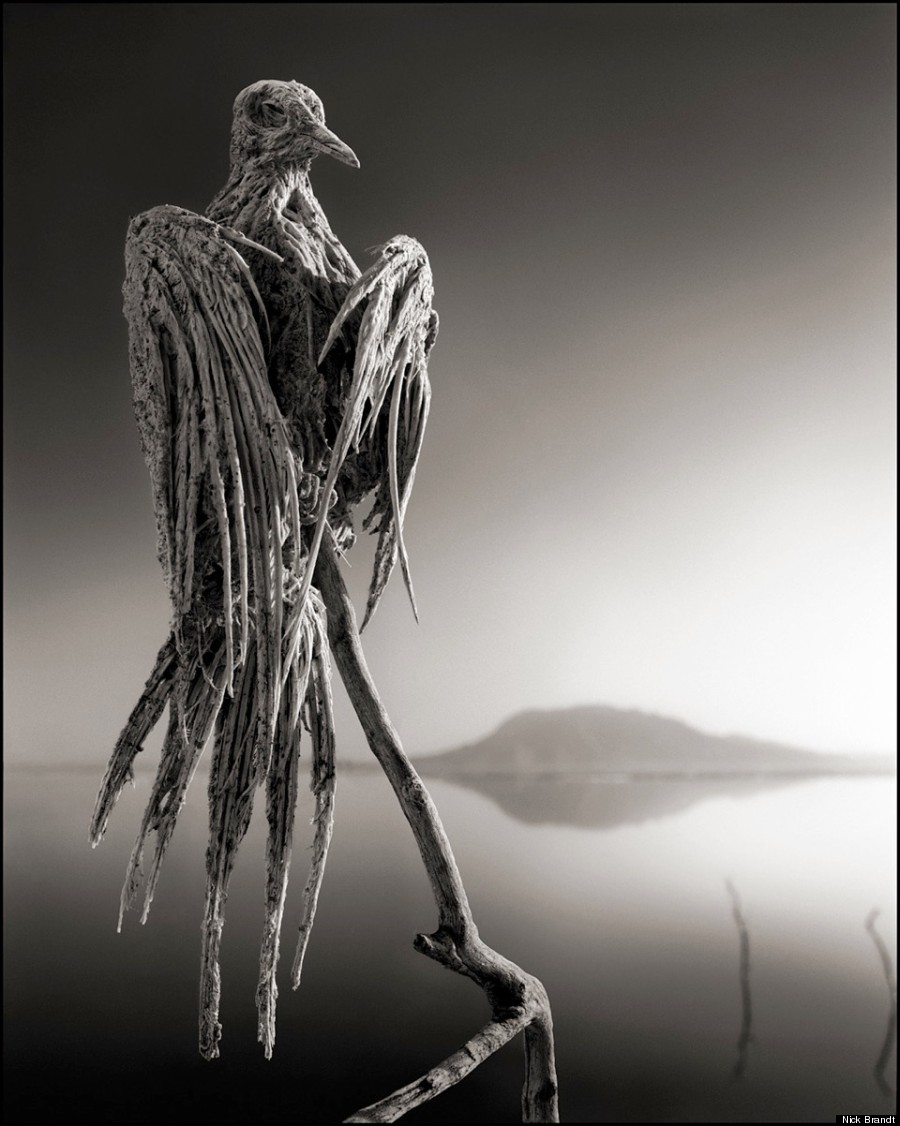
Calcified dove.
“Discovering
[these animals] washed up along the shoreline of Lake Natron, I thought
they were extraordinary — every last tiny detail perfectly preserved
down to the tip of a bat’s tongue, the minute hairs on his face. The
entire fish eagle was the most surprising and revelatory find,” Brandt,
who photographed these calcified animals in 2010 and 2012, told The
Huffington Post in an email Wednesday.
The creatures, he said, were “rock hard” from the calcification.
“There was
never any possibility of bending a wing or turning a head to make a
better pose — they were like rock,” he said, “so we took them and placed
them on branches and rocks just as we found them, always with a view to
imagining it as a portrait in death.”
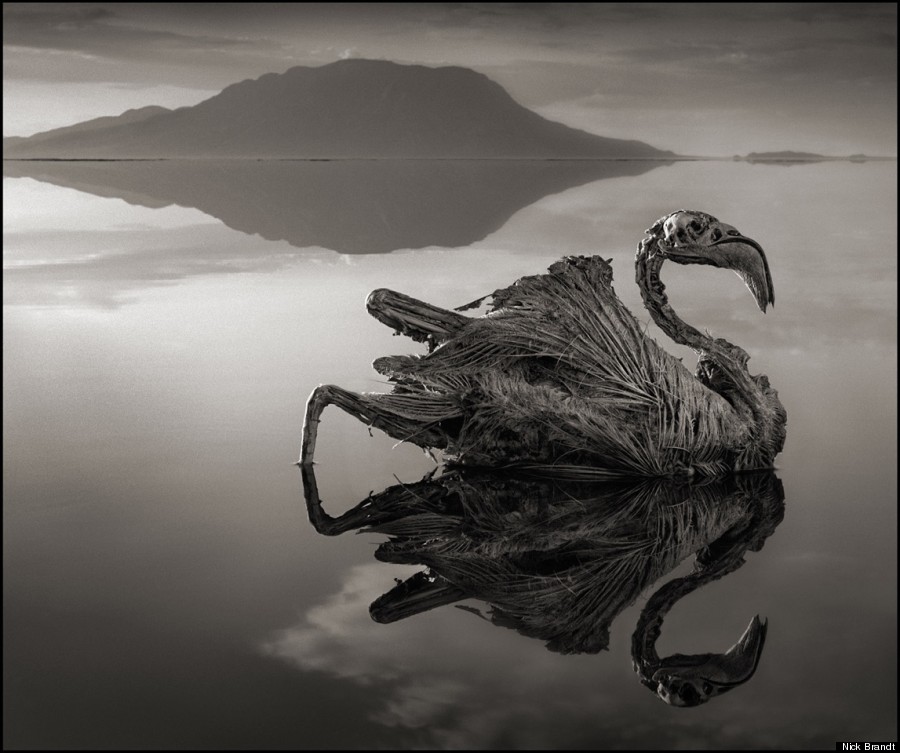
Calcified flamingo.

Calcified bat.
“The notion of
portraits of dead animals in the place where they once lived, placed in
positions as if alive again in death, was just too compelling to
ignore,” Brandt said of his decision to photograph the animals. “I took
these creatures as I found them on the shoreline, and then placed them
in ‘living’ positions, bringing them back to ‘life’, as it were.
Re-animated, alive again in death.”
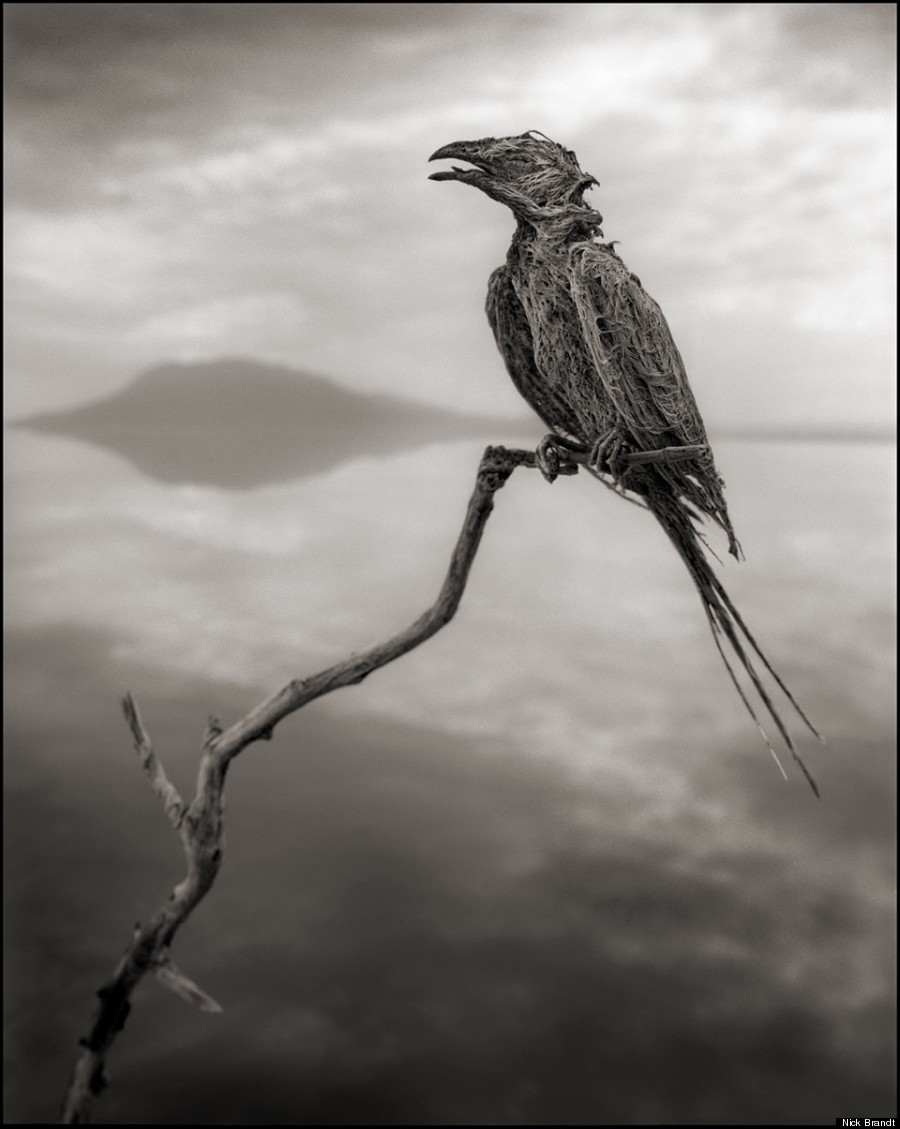
Calcified songbird.
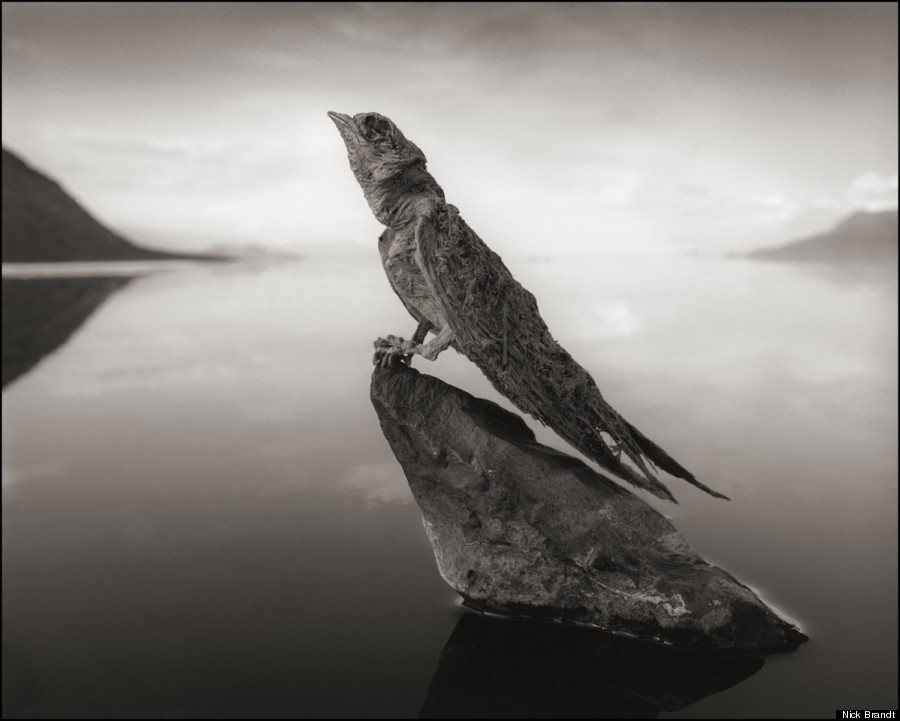
Calcified swallow.


ice cube machine
ReplyDeleteice cube maker machine
bullet shape ice cube machine
commercial ice cube machine
WOW
ReplyDelete